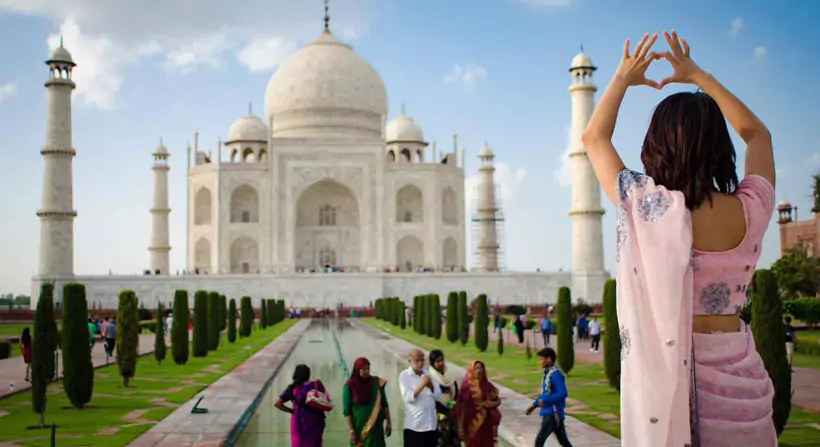Top Things to See and Do in Agra
The Taj Mahal usually takes center stage when people think of Agra – and rightly so. However, Agra is much more than just a picture-perfect monument. In addition to its royal history, timeless architecture, vibrant culture, and delicious food, it also has delicious food.
The Mughal Empire once ruled Agra, which has grand forts, tranquil gardens, lively markets, and some of the finest examples of Indian craftsmanship. Whether you’re a history lover, a romantic couple, a solo traveler, or a curious explorer, Agra offers unforgettable experiences for every kind of traveler.
In this guide, we go beyond the obvious and explore 15 amazing things to do in Agra — from boat rides on the Yamuna to cultural shows, Mughlai cuisine, rooftop sunsets, and more. Get ready to discover a side of Agra you never knew existed.
1. Marvel at the Iconic Taj Mahal
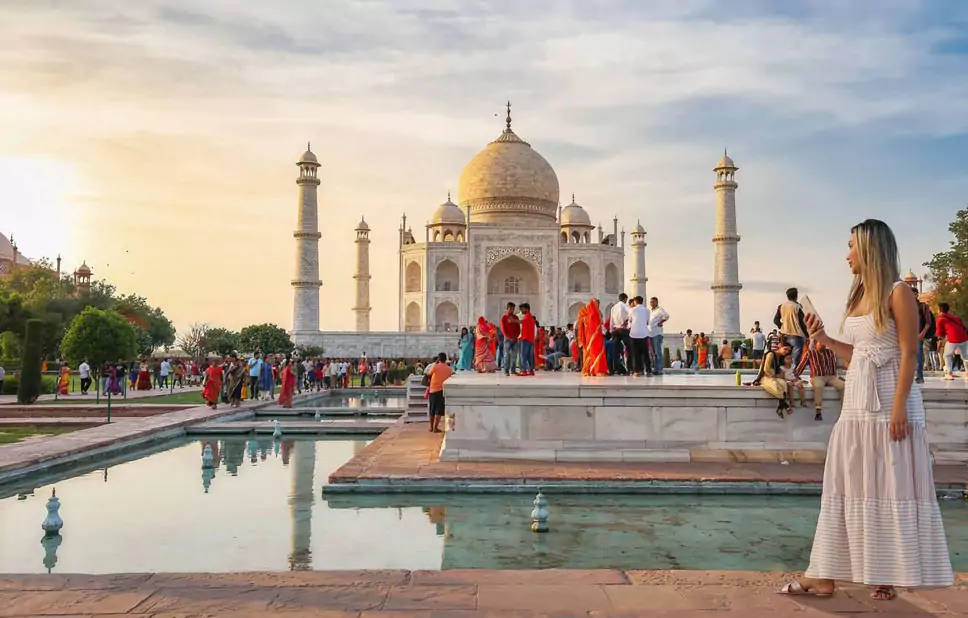
In the Taj Mahal, love and painstaking craftsmanship have created an emotional artwork crafted in marble. When dawn’s light reaches its pristine silhouette, the monument appears to glow-from soft mauve at dawn to radiant white by midday. At sunset, it turns honey-gold and finally touches pale pink under the twilight sky. The symmetrical reflection pool, manicured gardens, intricate gardens, and delicate inlay work all combine to make each photo and moment unforgettable.
Local Stories & Tips:
- Bring a knowledgeable guide who can explain the symbolic representations carved into the pietra dura inlay.
- Try visiting during a full moon night (check the ASI website for dates)—the monument is exquisitely lit and open late without crowds.
- Don’t miss the inscriptions of verses from the Quran carved above the main gateway—each changes size to appear uniform from the viewpoint.
2. Explore the Grandeur of Agra Fort
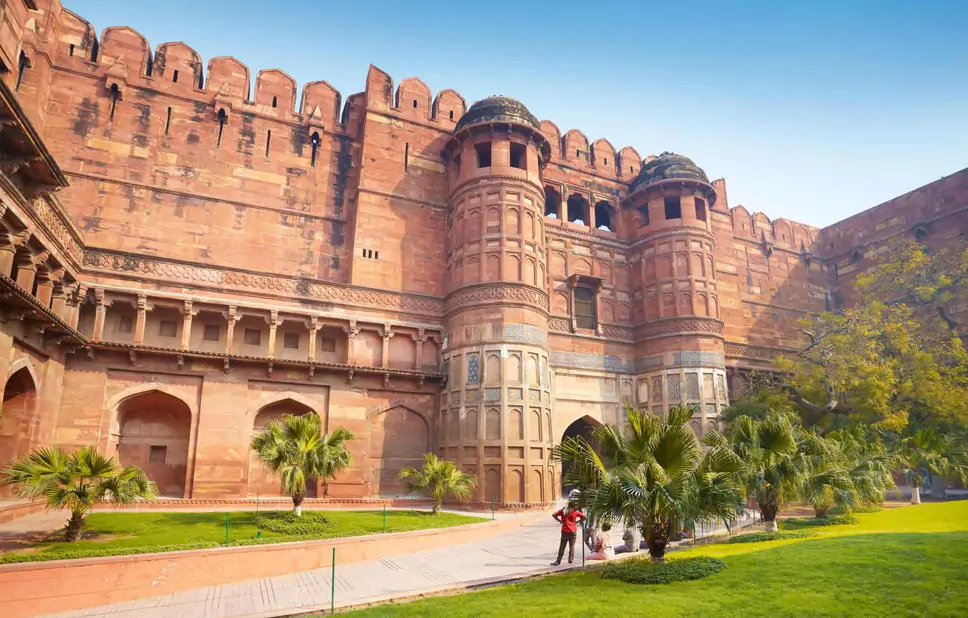
Agra Fort is a monumental city within fortified walls. It’s where Mughal history was not just lived but shaped. As you wander through red sandstone corridors into the Diwan‑i-Am and Diwan‑i‑Khas, you experience echoes of imperial assemblies and royal decrees.
Deep Dive:
- The Sheesh Mahal, or Mirror Palace, features tiny inlaid mirrors with star and floral patterns—once lit by candlelight, it glittered like a starry sky.
- In the private gardens of Jahangiri Mahal, look for ornate jharokhas (balconies) lined with carved lattice design offering panoramic views.
- Listen carefully near the walls: locals believe Agra Fort houses haunted stories linked to Shah Jahan’s imprisonment in Musamman Burj—add a guide for historical anecdotes and emotional connections.
3. Discover the Charm of Mehtab Bagh
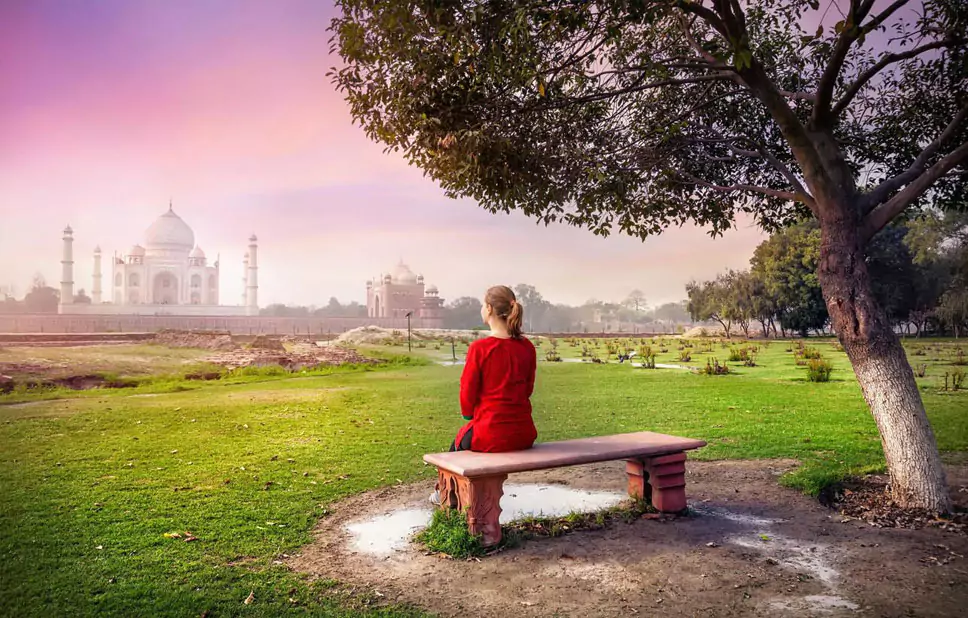
A lesser-known gem, Mehtab Bagh was originally built to admire the Taj from across the river. Today, it’s a peaceful green space offering reflection views of the Taj and poetic sunsets.
Insider Tips:
- Walk slowly between manicured flower beds—seasonal flowers bloom in winter and add color to your foreground.
- Visit during the winter full moon night and see the Taj under moonlight, though the garden gates may close early.
- There’s a small boat jetty nearby where local villagers offer short boat rides—perfect for achieving that framed Taj-within-a-boat shot.
4. Visit Itmad-ud-Daulah – The Baby Taj
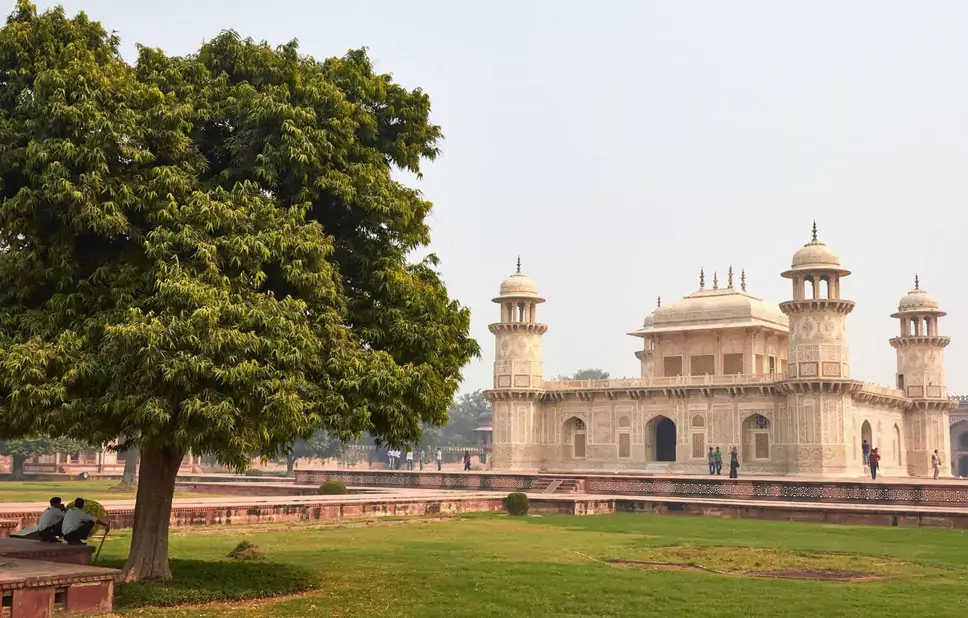
Itmad-ud-Daulah is calm, intimate, and intricately beautiful. Built by Nur Jahan in memory of her father, it sets an intimate contrast with the larger Taj.
What to Notice:
- The floor mosaic inlay resembles filigree jewelry brought to grand scale.
- Each marble surface bears different patterns—flowers, vines, birds—which glow against soft morning or late afternoon light.
- A visit here is less rushed; you can purchase jasmine garlands from nearby vendors and stroll peacefully in the quiet garden ambiance.
5. Step Into History at Fatehpur Sikri
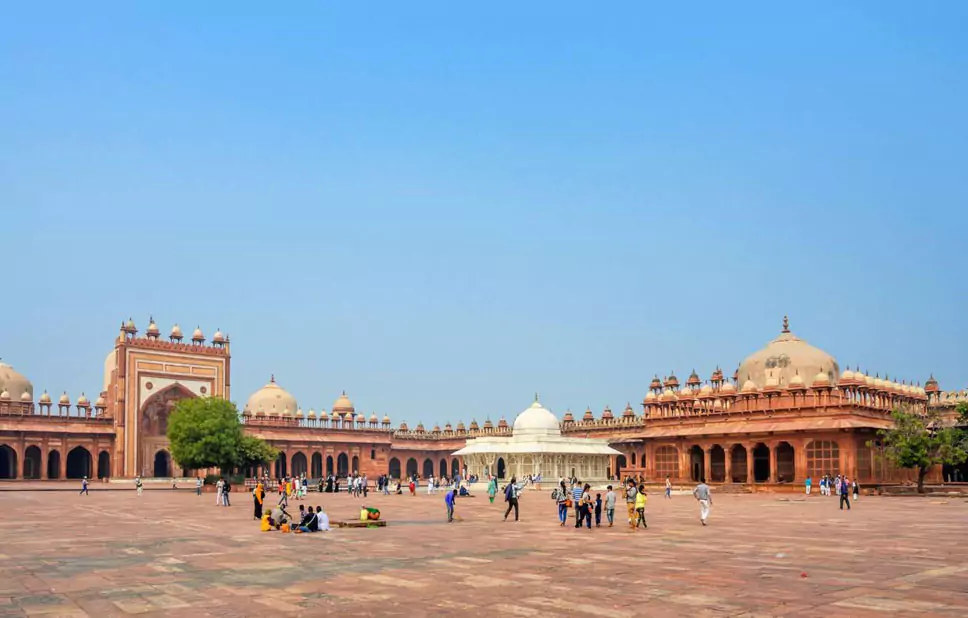
This abandoned capital reveals a grand Mughal experiment at royal governance and artistry. Each courtyard whispers stories—whether within the haunting Buland Darwaza or under the shadowed arches of Panch Mahal.
Explore Further:
- Visit the Tomb of Salim Chishti—devotees believe the white marble interior brings blessings; children are tied with sacred threads as part of local tradition.
- Climb to the top of Panch Mahal’s open pillars for sweeping views of the desert horizon.
- Eat khasta kachori and lassi from street vendors just outside the gate—they’re legendary snacks served fresh amidst centuries-old walls.
6. Enjoy a Traditional Mughlai Meal
Agra’s culinary soul is old-world richness and flavor. Regional recipes pass through generations—each bite tells a tale of spice routes, royal kitchens, and cultural fusion.
Taste Highlights:
- Try bedai kachori with spicy potato gravy at breakfast stalls near Sadar Bazaar.
- Order the buttery dal‑chini gosht or kanafta mutton at traditional Mughlai establishments.
- Don’t miss petha, the local translucent sweet—plain, saffron, or cardamom flavored—served in every roadside shop in various shapes.
7. Stroll Through the Taj Nature Walk
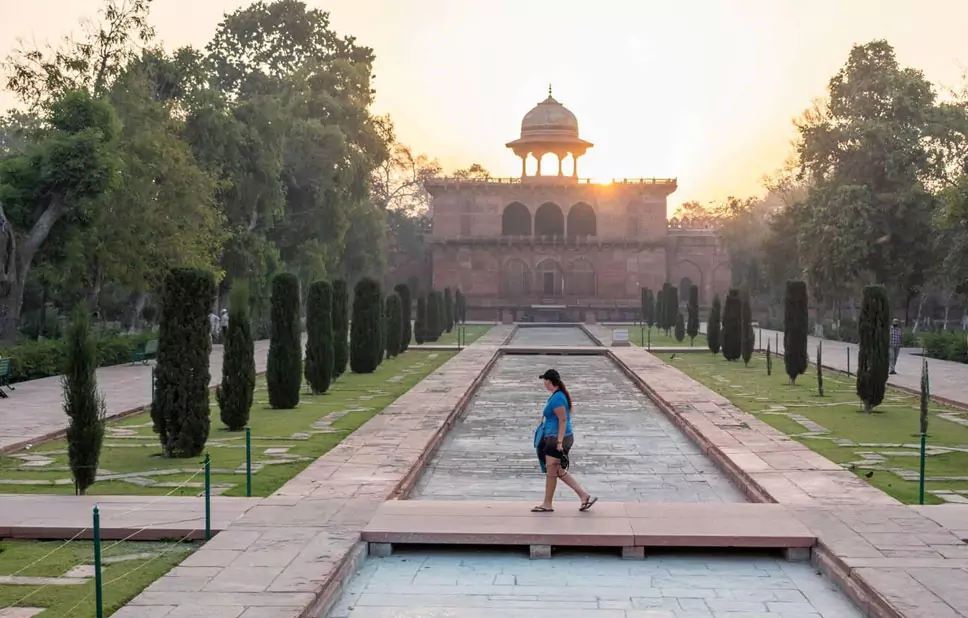
This environmentally preserved stretch isn’t just a garden but a story of civilization and nature intertwined. Tall local trees filter sunlight onto walking trails while peacocks, monkeys, and local birds visit quietly.
What to Experience:
- Climb watch towers for glimpses of the Taj tucked between tree branches—a photographer’s secret vantage.
- Visit in monsoon season to see vibrant greenery and migratory birds for splashes of color and biodiversity.
- Several benches around shaded corners are perfect for a reflective moment—pair with a book or simply sit and enjoy the breeze under the Neem trees.
8. Shop for Marble Handicrafts and Souvenirs
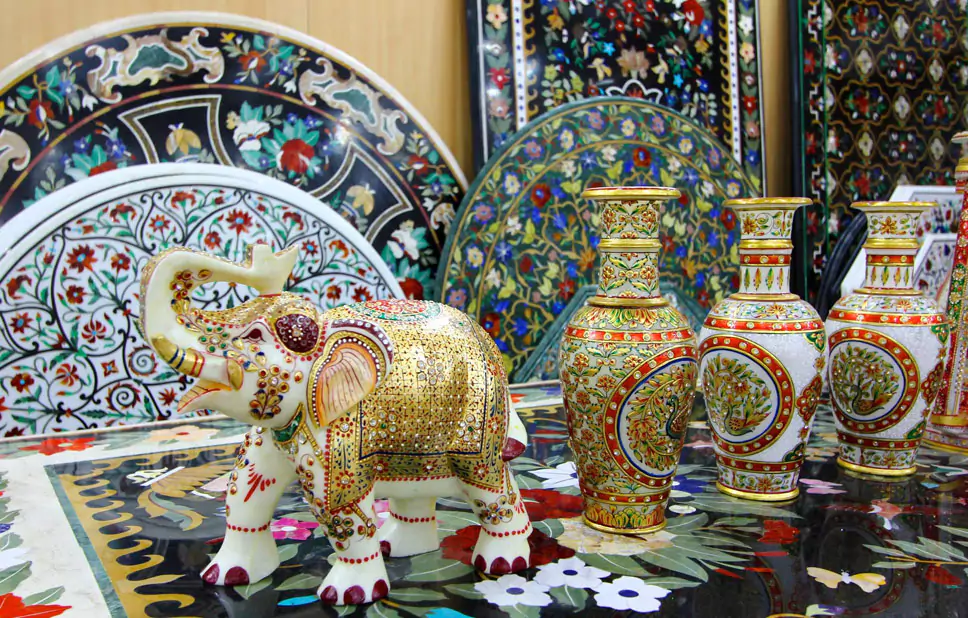
Agra’s craftsmen work in marble just like their ancestors who built the Taj. Each carved plaque, coasters, vase, or inlay miniature is made with care—and often a story.
Best Buying Spots:
- Watch artisans at Shilpgram carefully apply colorful inlay stones—some pieces take months to perfect.
- Check small signage on homicide shops: ASI-certified “No Child Labored” means strong ethical sourcing.
- Learn to negotiate (polite bargaining is usual), and always ask about packing art safely if you’re buying bulk or fragile pieces.
9. Admire the Architecture of Akbar’s Tomb in Sikandra

Akbar’s tomb is both peaceful and regal. Walk through pathways dotted with sandstone balustrades and Silk Cotton (Sala) trees; look for visiting deer and flocks of peacocks among the quiet gardens.
Why It Stands Out:
- The central tomb is marbled with Gothic arches and Hindu floral motifs—Akbar’s love of syncretic design.
- Contrast with Fatehpur Sikri’s hierarchy; here, symmetrical layout and serenity define the space.
- Visit at sunrise as the tuf of peacocks rustle through morning mist, and rays of the sun gradually illuminate the pale marble surface.
10. Take a Boat Ride on the Yamuna River
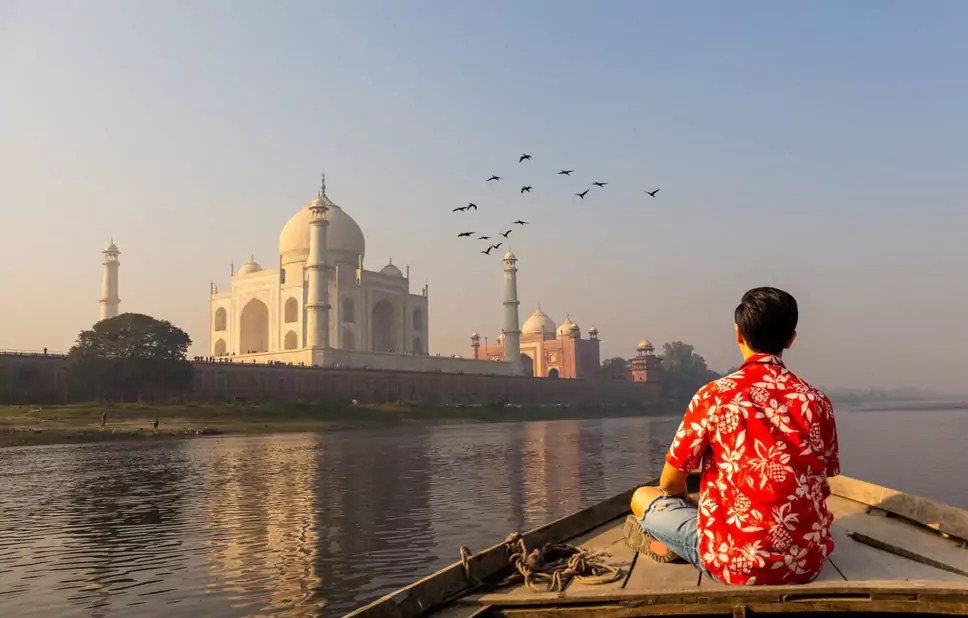
The Taj Mahal viewed from the river is an entirely different perspective. Twilight, dawn, or early evening—each offers soft reflections, cool colors, and a peaceful hush across the water.
Traveler’s Guide:
- Wear quiet clothes so as not to disturb the ripples.
- Try long exposure settings with ISO 100 to smooth water and capture the Taj’s mirror image.
- Local vendors often offer tea—ask for sweet masala chai in small clay cups as you slowly drift past.
11. Watch a Live Show at Kalakriti Cultural Center
This Bollywood-scale musical tells a love story behind the Taj in dramatic songs, visuals, and even symbolic props like a golden gate. Audiences across ages find themselves moved to tears by its finale.
Pro Tips:
- Seats in the middle sections offer best views of the stage and performers.
- English subtitles are projected on a side wall—great for international travelers.
- Pre-show, try local kebabs or dahi vada from vendors outside the theater.
12. Enjoy Taj mahal Sunset from Rooftop Cafés
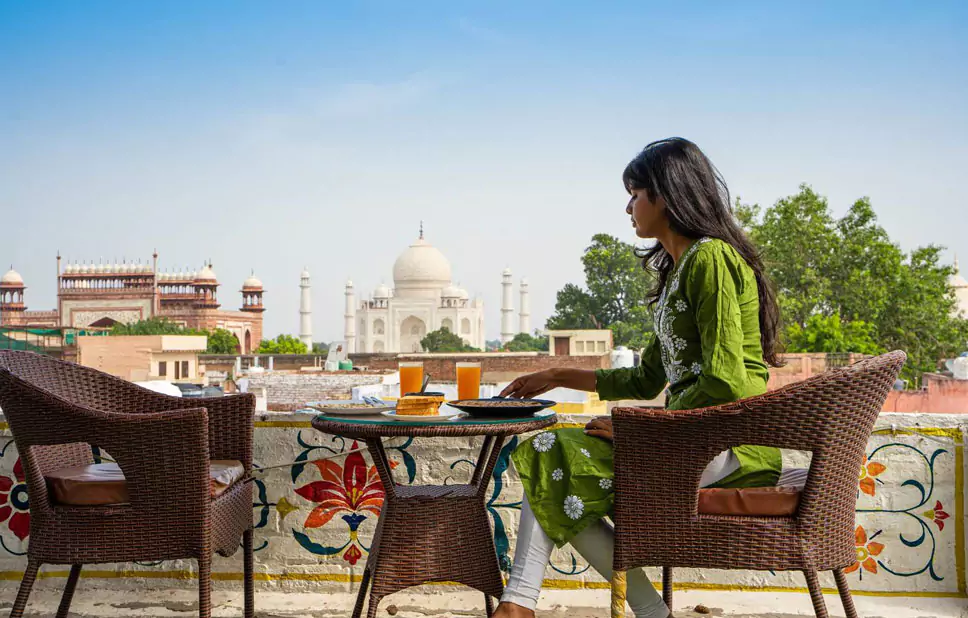
As golden hour arrives, rooftops overlooking the Taj Ganj district become serene vantage points—locals, couples, and tourists all converge to watch the shifting hues paint the monument.
Suggestions:
- Head to Esphahan, part of ITC Mughal for courteous service and shaded seating.
- Budget-conscious travelers will enjoy Hotel Saniya Palace Rooftop—try their lassi or cold coffee as the sky warms.
- Carry a lightweight jacket or scarf: the breeze off the Yamuna can get chilly after sunset.
13. Visit the Unique Chini Ka Rauza
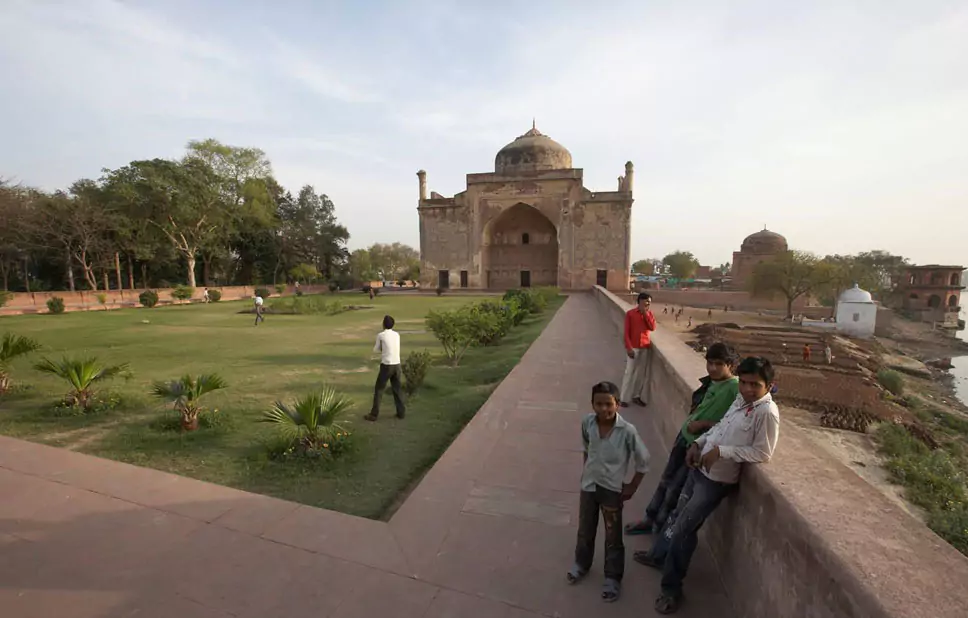
A beautiful anomaly among Agra’s landmarks, Chini Ka Rauza is modest in scale but imaginative in decoration—Persian glazed tiles shimmer under sunset sunlight, creating rippling, colorful reflections on the weathered stone.
Photo Tips:
- Use a zoom lens around 50–100 mm to focus on mosaic detail.
- Early evening provides best contrast between warm terracotta stones and turquoise tiles.
- Solo travelers often set up tripods—they have earned friendly curiosity from locals here.
14. Experience Local Life in Kachhpura Village
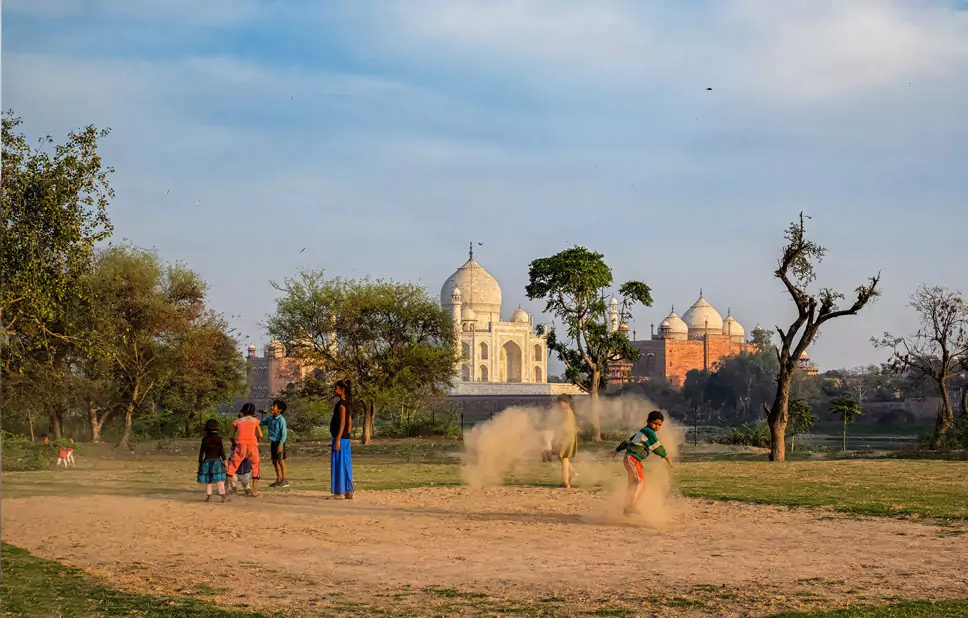
Kachhpura surprises with murals, rustic temples, painted lanes, and community-led storytelling. Local families invite travelers to sit with them, taste village-style chai, and share stories passed down generations.
Traveler Connections:
- Join women artisans weaving murals with natural pigments—some villages offer short workshops.
- Taste matka-shikanji—clay-pot lemonade with spices—and homemade sweets nachni laddoo offered when visiting.
- Learn how village fairs (melas) blend religion, art, and oral storytelling—sometimes tourists are invited to evening folk songs.
FAQs Expanded
Q1: When is the best time to visit Agra?
A: October to March ensures cool, dry air and clear skies—ideal for outdoor activities and travel comfort.
Q2: How do I get around the city safely?
A: Use trusted auto-rickshaws or app-based cabs; carry only essential items and avoid isolated riverbanks at night.
Q3: What’s the ideal number of days in Agra?
A: A thoughtfully planned 3‑day itinerary covers major monuments, offbeat experiences, local food, and cultural shows.
Q4: Are photography permits required?
A: Personal photography is allowed in most areas. Professional shoots and tripods inside monuments need prior ASI permits.
Q5: How do I minimize crowds at major spots?
A: Early morning visits—just after gates open—are best, especially for Taj Mahal and Agra Fort. Mehtab Bagh and Baby Taj remain relatively peaceful all day.
Q6: Is vegetarian or local street food safe here?
A: Pure vegetarian options like chaat and petha are generally safe. Stick to bottled water and eat fresh, busy stalls with visible foot traffic for hygiene.



